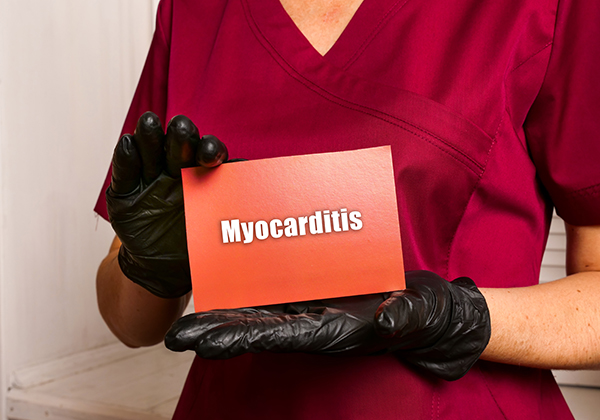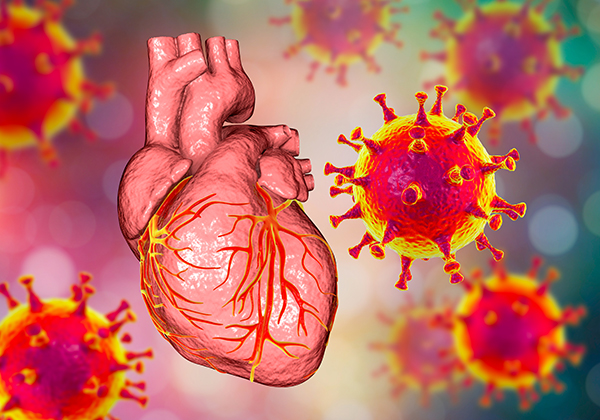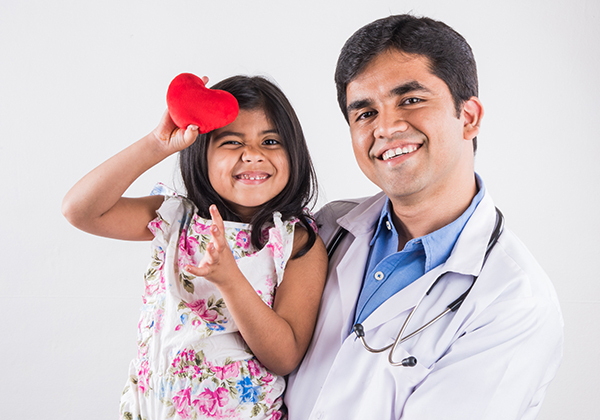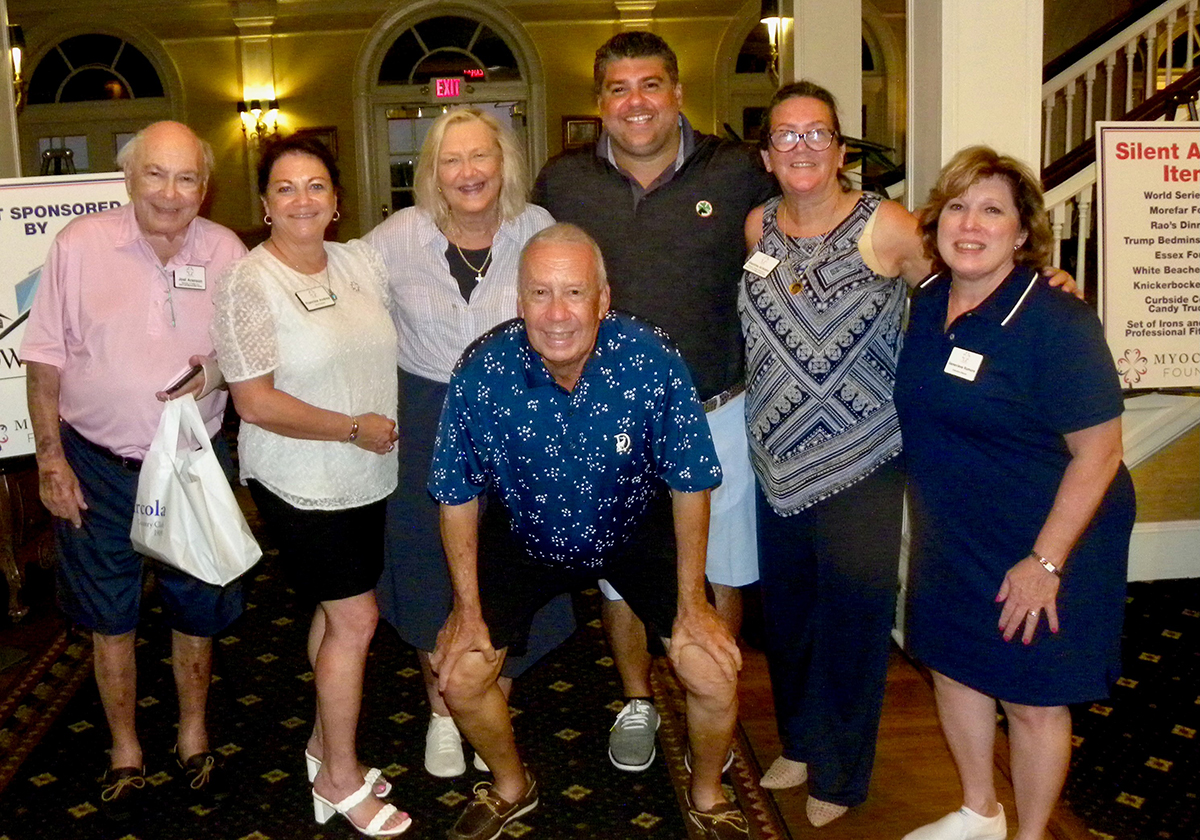(281) 713-2962
800 Rockmead Drive, Suite 155
Kingwood, TX 77339
[email protected]
Cardiac Sarcoidosis Randomized Trial
Status: Recruiting
Location: Allegheny General Hospital, Montefiore Medical Center, Ohio State University Medical Center, Tufts Medical Center, University of Michigan, University of Minnesota, University of Utah, Virginia Commonwealth University, Yale-New Haven Hospital
Conditions: Allegheny General Hospital, Montefiore Medical Center, Ohio State University Medical Center, Tufts Medical Center, University of Michigan, University of Minnesota, University of Utah, Virginia Commonwealth University, Yale-New Haven Hospital
City/State:
New Haven, Connecticut
Boston, Massachusetts
Ann Arbor, Michigan
New York, New York
Columbus, Ohio
Pittsburgh, Pennsylvania
Salt Lake City, Utah
Richmond, Virginia
Contact Information:
David H Birnie, MD
613-696-7269
[email protected]
Janine Ryan, BAH, CCRP
613-696-7000 ext 17077
[email protected]
Prospective randomized controlled trial comparing low dose Prednisone(or Prednisolone)/Methotrexate combination to standard dose Prednisone(or Prednisolone) in patients diagnosed with acute active clinically manifest cardiac sarcoidosis and not yet treated.
The Investigators hypothesize that low dose Prednisone(or Prednisolone)/Methotrexate combination will be as effective as standard dose Prednisone(or Prednisolone), and result in significantly better quality of life and less toxicity than standard dose Prednisone(or Prednisolone).
Subjects meeting the study inclusion/exclusion criteria will be randomized equally to receive either:
Everywhere but Japan:
-
-
- Prednisone 0.5 mg kg/day for 6-months (MAX dose 30 mg per day) or
- Methotrexate 15-20 mg po, sc, or IM once a week for 6-months + Folic Acid 2 mg OD for 6 months + Prednisone 20 mg day for 1 month, then 10 mg OD for 1 month, then 5 mg OD for one month then STOP
-
REgiStry Of the NAtural History of recurreNt periCarditis in pEdiatric and Adult Patients (Resonance)
Status: Active not recruiting
Location: Alaska Heart & Vascular Institute, Barnes-Jewish Hospital/Washington University, Brigham and Women's Hospital, Carnegie Mellon University, Cedars-Sinai Medical Center, Children's National Hospital- Washington D.C., Cincinnati Children's Hospital Medical Center, Cleveland Clinic, Detroit Medical Center, Houston Methodist Hospital, Johns Hopkins University, Lender Research Center at the Christ Hospital, Massachusetts General Hospital, Mayo Clinic in Rochester, Midwest Cardiovascular Research Foundation, Minneapolis Heart Institute Foundation, NYU Langone Health, Northwell Health - Lenox Hill Hospital, Northwestern University Medicine, Pima Heart and Vascular, Scripps Health, Seattle Children's Hospital, Swedish Medical Center - Cherry Hill, TKL Research Inc., University of California - San Diego, University of Texas Southwestern, University of Utah, University of Vermont Medical Center, Virginia Commonwealth University
Conditions: Alaska Heart & Vascular Institute, Barnes-Jewish Hospital/Washington University, Brigham and Women's Hospital, Carnegie Mellon University, Cedars-Sinai Medical Center, Children's National Hospital- Washington D.C., Cincinnati Children's Hospital Medical Center, Cleveland Clinic, Detroit Medical Center, Houston Methodist Hospital, Johns Hopkins University, Lender Research Center at the Christ Hospital, Massachusetts General Hospital, Mayo Clinic in Rochester, Midwest Cardiovascular Research Foundation, Minneapolis Heart Institute Foundation, NYU Langone Health, Northwell Health - Lenox Hill Hospital, Northwestern University Medicine, Pima Heart and Vascular, Scripps Health, Seattle Children's Hospital, Swedish Medical Center - Cherry Hill, TKL Research Inc., University of California - San Diego, University of Texas Southwestern, University of Utah, University of Vermont Medical Center, Virginia Commonwealth University
City/State:
Anchorage, Alaska
Tucson, Arizona
La Jolla, California
San Diego
Davenport, Iowa
Baltimore, Maryland
Boston, Massachusetts
Minneapolis, Minnesota
Rochester, Minnesota
Saint Louis, Missouri
Fair Lawn, New Jersey
New York, New York
Cincinnati, Ohio
Cleveland, Ohio
Pittsburgh, Pennsylvania
Houston, Texas
Burlington, Vermont
Richmond, Virginia
Seattle, Washington
Los Angeles, California
Washington, D.C.
Chicago, Illinois
Detroit, Michigan
Dallas, Texas
Salt Lake City, Utah
Contact Information:
Study Director:John F Paolini, MD, PhD,Kiniksa Pharmaceuticals Corp
Efficacy and Safety of RPH-104 Treatment in Patients With Recurrent Pericarditis
Status:
Location: Virginia Commonwealth University
Conditions: Virginia Commonwealth University
City/State:
Richmond, Virginia
Contact Information:
Antonio Abbate, MD
804-828-0513
[email protected]
The primary purpose of this study is the evaluation of the efficacy and safety of RPH-104 treatment in patients with recurrent pericarditis.
Pharmacokinetic and pharmacodynamic parameters of RPH-104 multiple doses in this patient population will be assessed as well.
This is a phase 2/3 seamless design study with one interim efficacy analysis. At stage 1 (assuming possible 10% dropout rate in run-in period and screening), around 25 patients will be enrolled. At least 20 patients will be randomized to receive either RPH-104 treatment or placebo.
During the interim analysis, the enrollment won’t be paused. Based on interim analysis results the study could be continued or closed. In the case of study continuation, the final estimated sample size is at least 72 patients to be randomized in the withdrawal period (including 20 or more patients randomized in the Stage 1 of the study). Assuming possible 10% dropout in run-in period and 45% dropout in screening period, approximately enrollment of 80 subjects are planned and around 146 subjects will be screened in this study.
The study will consists of five following periods:
- Screening period (up to 4 weeks). The patients’ eligibility for the study will be evaluated based on the eligibility criteria.
- Run-in (RI) single-blind treatment period (16 weeks) will include single- blind treatment with RPH-104 at a dose 160 mg subcutaneous (SC) on Day 0, and 80 mg on Day 7, Day 14 and thereafter once in two weeks (Q2W) for all patients.The RI period includes:
- 2-weeks Stabilization period, during which blinded RPH-104 is administered on top of standard of care (SOC) pericarditis therapy, and the ongoing pericarditis episode is treated.
- 10- week Weaning period, during which patients are gradually tapered and stopped background SOC pericarditis therapy, while treatment with blinded RPH-104 continues. corticosteroids (CS) and analgesics (opioid and non-opioid) dose will be tapered starting at RI week 2 and will be stopped by Week 12. NSAIDs and colchicine will be tapered starting at RI Week 6 and will be stopped by Week 12. Opioid analgesics can be continued after Week 12 at stable doses through the end of the OL period if cannot be discontinued without withdrawal symptoms.
- 4-week Monotherapy period: patients who stopped of background SOC pericarditis therapy will continue to receive blinded RPH-104.
Patients who discontinue SOC therapy and achieve clinical response at Week 16 are eligible for randomization in the randomized withdrawal (RW) period.
- Randomized withdrawal (RW) period (24 weeks) includes double-blind treatment with RPH-104 80 mg or placebo Q2W depending on the randomization group.
- Open-label treatment period (OL) (12 weeks). After completion of the RW period, all subjects that did not discontinue study drug will be transferred to Open-Label (OL) period and will receive open-label RPH-104 80 mg once in two weeks.
- Safety follow-up period includes monitoring of safety for 8 weeks after the last dosing of the study drug for patients who decided not to participate in open label extension long-term safety study (CL04018108).
The total maximal duration of the study for an individual subject will be approximately 64 weeks.
MYTHS – MYocarditis THerapy with Steroids
Status: Recruiting
Location: University of California - San Diego, University of Texas - Houston, University of Virginia, Virginia Commonwealth University
Conditions: University of California - San Diego, University of Texas - Houston, University of Virginia, Virginia Commonwealth University
City/State:
San Diego, California
Richmond, Virginia
Houston, Texas
Charlottesville, Virginia
Contact Information:
Enrico Ammirati, MD, PhD
+39 026-444-7791
[email protected]
Acute myocarditis (AM) is a common condition characterized by histological evidence of inflammatory infiltrates associated with myocyte necrosis of non-ischemic origin. Clinical presentation spans from indolent form to cardiogenic shock also called fulminant myocarditis (FM). Patients can be stratified on the basis of their clinical presentation: patients with left ventricular (LV) ejection fraction (EF)<50% at first echocardiogram, and those with sustained ventricular arrhythmias, called complicated AM, have a worse prognosis compared with uncomplicated cases with preserved left ventricular ejection fraction (LVEF) and without arrhythmias. Among complicated AM, FM patients are those ones at the highest risk, presenting with severely impaired LVEF (generally <40%), and with need for inotropes and/or temporary mechanical circulatory supports (t-MCS).The pathogenesis of AM is felt to be due to an immune-mediated response against the myocardium.
As such, the overall objective is to evaluate the efficacy of pulsed IV corticosteroids therapy for the treatment of AM. It is proposed to test the efficacy of pulsed IV methylprednisolone in a single blind randomized controlled trial versus standard therapy on top of maximal support. The rationale for using pulsed corticosteroid therapy in the acute setting (within 3 weeks from cardiac symptoms’ onset) to reduce myocardial inflammatory infiltrates favoring recovery appears strong. Nevertheless, no trial has tested this hypothesis in the very acute phase of AM, despite the high mortality rate of this condition and the fact that AM mainly affects young patients.
Currently, no specific medications in the acute phase of lymphocytic AM are recommended beyond supportive therapy with inotropes and t-MCS. One Cochrane review on corticosteroids showed that almost all studies focused on inflammatory cardiomyopathies with 6 months of symptoms of heart failure (HF), and despite an improvement of cardiac function observed in low quality and small size studies, there was no improvement in the survival. In the past, only one study assessed the efficacy of immunosuppression in AM, the Myocarditis Treatment Trial (MTT) that reported no benefit from immunosuppression. Neutral results in the MTT could be ascribed to a delay in the initiation of this potentially effective treatment. Thus, 55% of patients started immunosuppressive therapy after 1 month from the onset of myocarditis, when the left ventricle (LV) was already dilated, as highlighted by a mean LV end-diastolic diameter (EDD) of 64 mm. It is expected that patients with FM have normal LV dimension during the acute phase despite severe LV systolic dysfunction. Based on a study from PI group, it was observed that FM patients recover most of the LVEF in the first 2 weeks after admission, with a median absolute increase of 30%. This finding further suggests that an immunosuppressive treatment should be started as soon as possible to demonstrate effectiveness. As little has changed in the medical treatment of this condition in the last 30 years, identification of effective drugs is needed.
Patients admitted to hospital for suspected AM complicated by acute HF/cardiogenic shock and LV systolic dysfunction will be screened for randomization.
Patients will be randomized in the two arms in a 1:1 ratio (Pulsed methylprednisolone therapy vs Placebo). Randomization will be performed with stratification by country.
The primary objective is to demonstrate a reduction in the rate of the primary composite endpoint on patients treated with pulsed methylprednisolone therapy vs. standard therapy and maximal supportive care.
Endpoints will be analyzed according to the following principles:
- Intention-to-treat (ITT) population
- Per Protocol (PP) population:
- “Safety population”
- A sensitivity analysis will also be performed on the previously defined populations after excluding patients (1) with histological diagnosis of giant cell myocarditis (GCM) or (2) who did not reach the final diagnosis of acute myocarditis based on CMRI or histology.
Sample size calculation: we plan to recruit a total of 360 patients, and we expect that about 20% of these patients or local physicians will refuse randomization. This would leave a total of 288 randomized patients (144 per arm).
Considering as relevant a reduction in the probability to reach the primary endpoint at 6 months from 25% in the standard therapy on top of maximal supportive care arm to 12% in the pulsed corticosteroid therapy arm (absolute risk reduction of 13% in absolute corresponding to a hazard ratio (HR) pulsed corticosteroid therapy vs. standard therapy of 0.44), the planned sample size will allow achieving a power of 0.80 with a one-sided log-rank test and an overall type I error of 0.025. The 25% figure considered for the standard therapy derives from a retrospective analysis of the patient’s cohort spanning over 20 years. The calculation includes an interim analysis planned at 50% recruitment (O'Brien-Fleming method). This interim analysis is accounted for in the sample size calculation with an alpha level of 0.001525 (final analysis 0.023475 alpha level) and is planned on the primary endpoint to assess a possible early treatment effect. No specific stopping rules are planned, given the multiplicity of aspects involved, but the report on safety will be reviewed by the Data and Safety Monitoring Committee (DSMC) will advise on possible aspects of the trial that need reconsideration.
Sample size adaptation: We will consider, based on the DSMC advise an adaptive approach to sample size in two regards:
- At the interim analysis, if the baseline incidence is lower than the expected 25%, the sample size calculation may be re-evaluated keeping the same HR of 0.44. For instance, if the observed incidence is 20%, maintaining the same HR of 0.44 (corresponding to an incidence of 9% in the pulsed corticosteroid therapy group, i.e. 11% in absolute risk reduction) the effective sample size needed to achieve 80% power should be increased to 360 patients. If the baseline incidence is higher than 25%, the planned actual sample size will achieve a power greater than 80% to detect a HR of 0.44 and no action will be taken.
- Based on the conditional power method, and on the DSMC advise, we may reconsider if a less promising result than HR=0.4444 is worth pursuing, given the current observed estimate. This case would require an increase in sample size that will be discussed in terms of relevance and feasibility. For example, if at the planned interim analysis, the estimated absolute risk reduction is at least 10% (HR=0.56) with 25% baseline, and the conditional power of meeting this 10% target (instead of the planned 13%) would be at least 60%, the sample size may be increased to reach the 80% desired power. In this case, the final effective sample size should be increased to 254 patients per arm to preserve an 80% power of demonstrating the less marked difference. The flexibility allowed in the sample size estimate will be considered based on the evaluation of the interim report by the DSMC and no data will be disclosed on interim treatment estimates to the study coordinator and steering committee.
The overall duration of the study from first patient first visit to last patient last visit will be 39 months. The follow-up will be up to 6 months and with additional 3 months to lock the database. Enrollment will last 30 months.
In parallel, there will be a prospective registry of patients that are eligible for the trial, but they are not randomized.
A second registry, called MYOCARDITIS REGISTRY will prospectively recruit all patients with acute myocarditis demonstrated by CMRI or EMB who are not eligible for randomization (not all centers will take part in this registry).
The study is supported by a grant from Italian Ministry of Health (GR-2019-12368506) and Lombardy Region.
Exemption from the investigational new drug (IND) regulations by FDA on August 2nd, 2021 (PIND: 15727)
EudraCT identifier: 2021-000938-34






























